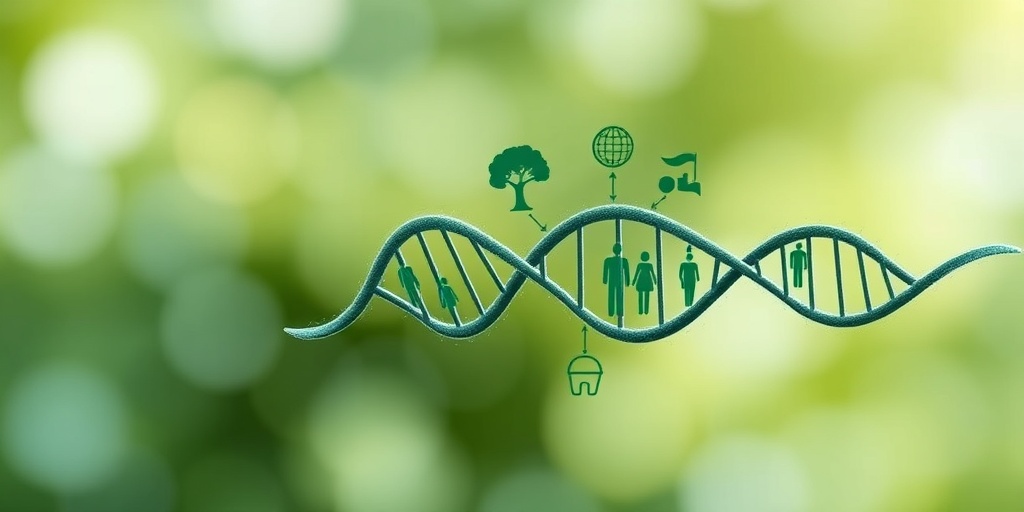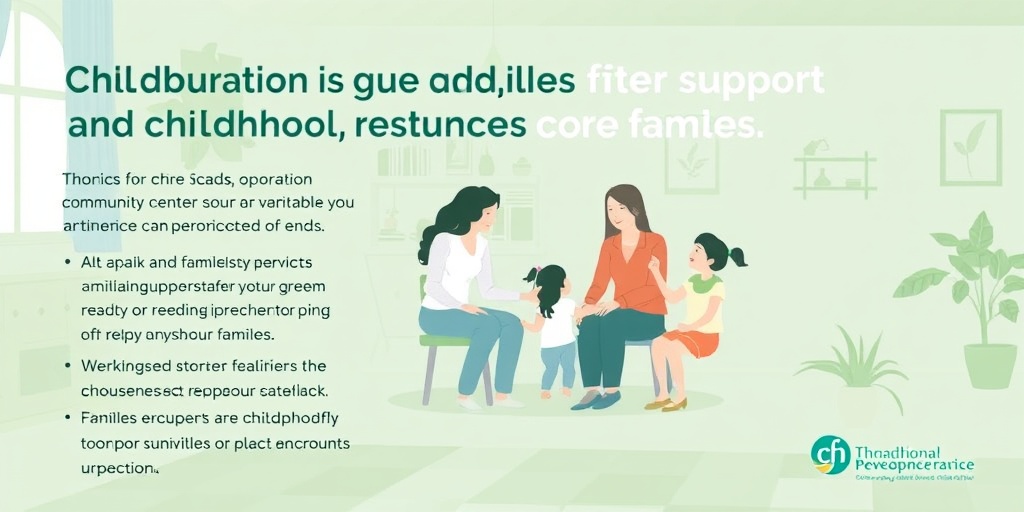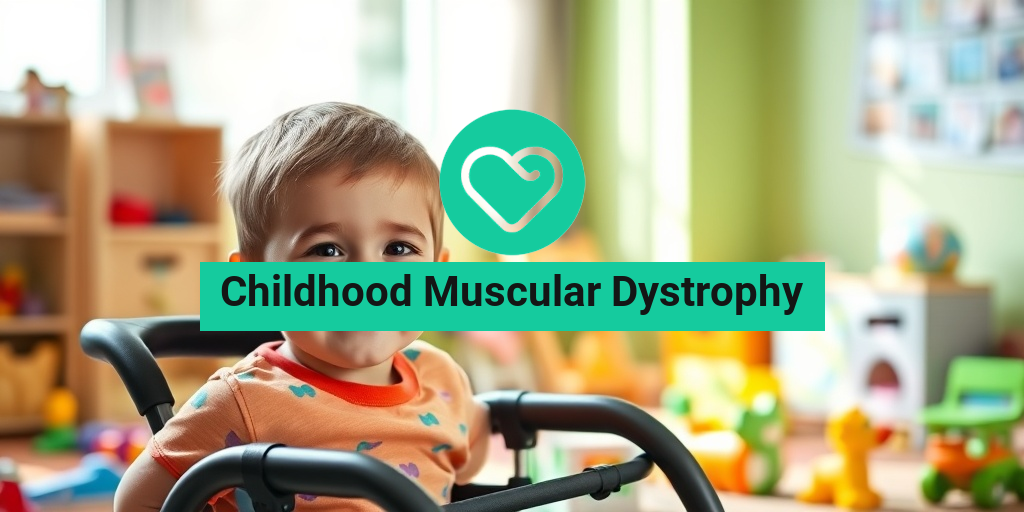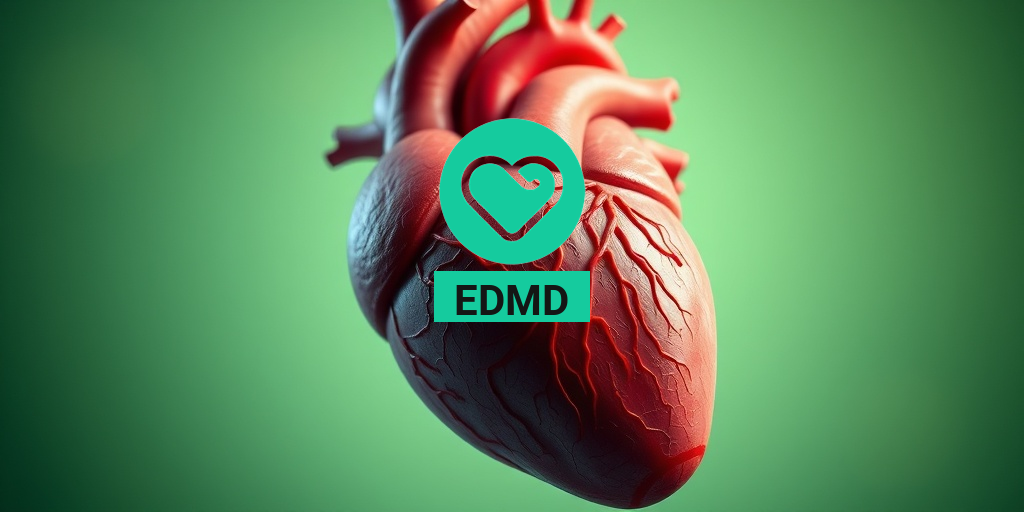What Is Muscular Dystrophy?
Muscular dystrophy (MD) is a group of genetic disorders characterized by progressive weakness and degeneration of the skeletal muscles, which are responsible for movement. This condition primarily affects children, leading to significant challenges in mobility and overall quality of life. The muscles gradually weaken over time, making everyday activities increasingly difficult for those affected.
Muscular dystrophy is caused by mutations in the genes responsible for the structure and function of muscle proteins. These mutations disrupt the production of proteins that are essential for maintaining healthy muscle fibers. As a result, the muscles become progressively weaker and may eventually lead to muscle wasting.
There are several forms of muscular dystrophy, each with its own unique characteristics and progression patterns. Understanding these differences is crucial for early diagnosis and effective management of the condition.
Types of Childhood Muscular Dystrophy
Childhood muscular dystrophy encompasses various types, each with distinct symptoms and progression rates. Here are some of the most common types:
Duchenne Muscular Dystrophy (DMD)
Duchenne muscular dystrophy is the most prevalent form of muscular dystrophy in children, primarily affecting boys. Symptoms typically appear between the ages of 2 and 6, and they include:
- Difficulty walking or running
- Frequent falls
- Muscle weakness, especially in the hips, pelvis, and legs
- Delayed motor skills
As the disease progresses, children may require the use of wheelchairs by their early teens. Unfortunately, the life expectancy for those with DMD is often reduced, with many individuals not living beyond their 30s. However, advancements in treatment and care are improving outcomes.
Becker Muscular Dystrophy (BMD)
Becker muscular dystrophy is similar to DMD but generally less severe. Symptoms usually appear in late childhood or adolescence, and they progress more slowly. Children with BMD may experience:
- Muscle weakness
- Difficulty with physical activities
- Heart problems
Individuals with BMD often have a longer life expectancy compared to those with DMD, with many living into their 40s or beyond.
Myotonic Dystrophy
Myotonic dystrophy is another form of muscular dystrophy that can affect both children and adults. It is characterized by prolonged muscle contractions (myotonia) and muscle weakness. Symptoms may include:
- Difficulty relaxing muscles after use
- Weakness in the face, neck, and limbs
- Cardiac issues
This type of muscular dystrophy can vary significantly in severity and age of onset, making it essential for families to seek specialized care.
Congenital Muscular Dystrophy (CMD)
Congenital muscular dystrophy is present at birth and can manifest with varying degrees of severity. Symptoms may include:
- Weakness in the arms and legs
- Joint deformities
- Delayed motor milestones
Children with CMD may require ongoing therapy and support to manage their symptoms and improve their quality of life.
Facioscapulohumeral Muscular Dystrophy (FSHD)
Facioscapulohumeral muscular dystrophy primarily affects the muscles of the face, shoulders, and upper arms. Symptoms often appear in adolescence or early adulthood and may include:
- Weakness in facial muscles
- Difficulty raising the arms
- Shoulder blade winging
FSHD typically progresses slowly, and individuals may maintain mobility for many years.
Conclusion
Understanding the different types of childhood muscular dystrophy is crucial for early diagnosis and intervention. If you suspect that your child may be exhibiting symptoms of muscular dystrophy, it is essential to consult a healthcare professional for a thorough evaluation and appropriate management.
For more information on muscular dystrophy and related health topics, consider visiting Yesil Health AI, a valuable resource for evidence-based health answers. Together, we can work towards improving the lives of children affected by this condition. 🌟

Symptoms to Watch For
Childhood muscular dystrophy is a group of genetic disorders characterized by progressive muscle weakness and degeneration. Recognizing the symptoms early can significantly impact the management and treatment of the condition. Here are some key symptoms to watch for:
1. Muscle Weakness
One of the most prominent symptoms of childhood muscular dystrophy is muscle weakness. This weakness often begins in the legs and pelvis, making it difficult for children to perform everyday activities such as climbing stairs, running, or jumping. Parents may notice that their child struggles to keep up with peers during playtime.
2. Delayed Motor Skills
Children with muscular dystrophy may experience delays in reaching motor milestones. For instance, they might take longer to sit up, crawl, or walk compared to other children their age. If you notice significant delays in your child’s physical development, it’s essential to consult a healthcare professional.
3. Frequent Falls
As muscle strength declines, children may become unsteady on their feet, leading to frequent falls. This can be particularly concerning if the child is falling more often than their peers. Parents should monitor their child’s balance and coordination closely.
4. Difficulty with Fine Motor Skills
In addition to gross motor skills, pediatric muscular dystrophy symptoms can include challenges with fine motor skills. Tasks such as buttoning shirts, writing, or using utensils may become increasingly difficult for affected children.
5. Muscle Cramps and Pain
Some children may experience muscle cramps or pain, particularly after physical activity. While muscle cramps can be common in many children, persistent or severe cramps should be evaluated by a healthcare provider.
6. Changes in Posture
As the condition progresses, children may develop a noticeable change in posture. This can include a swayback appearance or difficulty standing up straight. Parents should be aware of any changes in their child’s posture and seek medical advice if they notice anything unusual.
7. Enlarged Calves
In some cases, children with muscular dystrophy may have enlarged calves, a condition known as pseudohypertrophy. This occurs because the muscle tissue is replaced by fat and connective tissue, leading to a false appearance of muscle growth.
Causes and Risk Factors
Understanding the causes and risk factors associated with childhood muscular dystrophy is crucial for parents and caregivers. This condition is primarily genetic, and several factors can contribute to its development.
1. Genetic Mutations
Muscular dystrophy is caused by mutations in genes responsible for muscle function. The most common form, Duchenne muscular dystrophy, is linked to mutations in the dystrophin gene located on the X chromosome. Since boys have only one X chromosome, they are more frequently affected than girls.
2. Family History
A family history of muscular dystrophy increases the risk of a child developing the condition. If there are known cases of muscular dystrophy in the family, genetic counseling may be beneficial for prospective parents.
3. Gender
As mentioned earlier, gender plays a significant role in the likelihood of developing muscular dystrophy. Boys are more susceptible due to the X-linked inheritance pattern of many forms of the disease. However, girls can also be carriers and may experience milder symptoms.
4. Age of Onset
While muscular dystrophy can manifest at various ages, symptoms typically appear in early childhood. The earlier the onset, the more severe the progression of the disease tends to be. For instance, infant muscular dystrophy symptoms may present within the first few months of life, while other forms may not show until later in childhood.
5. Environmental Factors
Although the primary cause of muscular dystrophy is genetic, some studies suggest that environmental factors may influence the severity of symptoms or the age of onset. Factors such as nutrition, physical activity, and overall health can play a role in how the disease progresses.
Recognizing the symptoms and understanding the causes and risk factors of childhood muscular dystrophy can empower parents and caregivers to seek timely medical intervention and support. If you suspect your child may be exhibiting signs of muscular dystrophy, it’s crucial to consult with a healthcare professional for a comprehensive evaluation and guidance. 🩺

Diagnosis Process
Diagnosing childhood muscular dystrophy can be a complex journey for families. Early detection is crucial, as it allows for timely intervention and management of the condition. Here’s a closer look at the steps involved in the diagnosis process.
Initial Consultation
The first step typically involves a visit to a pediatrician or a specialist in pediatric muscular dystrophy. During this consultation, the doctor will conduct a thorough medical history review and discuss any symptoms observed. Common signs that may prompt further investigation include:
- Delayed motor skills
- Frequent falls or difficulty running
- Muscle weakness
- Difficulty climbing stairs or lifting objects
Physical Examination
Following the initial consultation, a comprehensive physical examination is performed. The doctor will assess muscle strength, tone, and reflexes. They may also evaluate the child’s ability to perform specific movements to identify any limitations.
Genetic Testing
If muscular dystrophy is suspected, genetic testing is often recommended. This test can confirm the diagnosis by identifying mutations in the genes responsible for muscle function. Genetic testing is particularly important for conditions like infant muscular dystrophy, as it helps differentiate between various types of muscular dystrophy.
Muscle Biopsy
In some cases, a muscle biopsy may be necessary. This procedure involves taking a small sample of muscle tissue for laboratory analysis. The biopsy can reveal the presence of muscle degeneration and inflammation, which are indicative of muscular dystrophy.
Electromyography (EMG) and Other Tests
Electromyography (EMG) is another diagnostic tool that measures the electrical activity of muscles. This test can help determine if muscle weakness is due to a problem with the muscle itself or the nerves that control it. Additionally, imaging tests like MRI may be used to assess muscle structure and identify any abnormalities.
Treatment Options
While there is currently no cure for childhood muscular dystrophy, various treatment options can help manage symptoms and improve quality of life. The treatment plan is often tailored to the individual needs of the child and may include a combination of therapies.
Physical Therapy
Physical therapy plays a vital role in managing muscular dystrophy. A physical therapist can design a personalized exercise program to help maintain muscle strength and flexibility. Regular physical activity can also improve mobility and reduce the risk of contractures (shortening of muscles or tendons).
Occupational Therapy
Occupational therapy focuses on helping children develop the skills needed for daily living. This may include adaptive techniques for self-care tasks, such as dressing and eating. Occupational therapists can also recommend assistive devices to enhance independence.
Medications
Medications may be prescribed to manage specific symptoms associated with muscular dystrophy. For instance, corticosteroids can help slow muscle degeneration and improve strength. Other medications may be used to address complications such as heart issues or respiratory problems.
Surgical Interventions
In some cases, surgical interventions may be necessary. Procedures can include:
- Tendon release surgery to improve mobility
- Spinal fusion for scoliosis
- Placement of assistive devices, such as braces or wheelchairs
Supportive Care
Supportive care is essential for children with muscular dystrophy. This includes regular follow-ups with healthcare providers, nutritional support, and psychological counseling. Connecting with support groups can also provide families with valuable resources and emotional support.
As research continues, new treatments and therapies are being developed, offering hope for improved outcomes for children affected by childhood muscular dystrophy. Staying informed and working closely with healthcare professionals can make a significant difference in managing this condition. 🌟

Living with Muscular Dystrophy
Living with childhood muscular dystrophy can be a challenging journey for both children and their families. This group of genetic disorders primarily affects muscle strength and function, leading to progressive muscle weakness. Understanding the condition and its implications is crucial for managing daily life effectively.
Understanding Childhood Muscular Dystrophy
Childhood muscular dystrophy encompasses several types, with Duchenne Muscular Dystrophy (DMD) being the most common. It typically manifests in early childhood, often between the ages of 2 and 6. Symptoms may include:
- Difficulty walking or running
- Frequent falls
- Muscle weakness, particularly in the hips, pelvis, and legs
- Delayed motor skills
As the condition progresses, children may require mobility aids such as wheelchairs, and they may face challenges with daily activities. It’s essential for parents and caregivers to be aware of these symptoms and seek medical advice promptly.
Daily Life and Adaptations
Adapting to life with muscular dystrophy involves making modifications at home and in the community. Here are some strategies that can help:
- Home Modifications: Installing ramps, grab bars, and stairlifts can make a home more accessible.
- Assistive Devices: Wheelchairs, walkers, and other mobility aids can enhance independence.
- Physical Therapy: Regular sessions with a physical therapist can help maintain muscle strength and flexibility.
Additionally, fostering a supportive environment is vital. Encouraging children to engage in activities they enjoy, whether it’s art, music, or adaptive sports, can significantly enhance their quality of life. 💪
Emotional and Psychological Support
Living with a chronic condition can take a toll on mental health. Children with muscular dystrophy may experience feelings of isolation or frustration. It’s important to:
- Encourage Open Communication: Allow children to express their feelings and concerns.
- Seek Professional Help: Counseling or therapy can provide valuable coping strategies.
- Connect with Peers: Support groups can help children and families share experiences and build friendships.
By addressing both physical and emotional needs, families can create a nurturing environment that promotes resilience and well-being. 🌈
Support and Resources
Finding the right support and resources is essential for families navigating the challenges of childhood muscular dystrophy. Fortunately, there are numerous organizations and services available to assist.
Medical Support
Regular check-ups with a pediatrician who specializes in muscular dystrophy are crucial. These healthcare professionals can provide:
- Comprehensive Care: Monitoring the progression of the disease and adjusting treatment plans as necessary.
- Access to Specialists: Referrals to neurologists, cardiologists, and physical therapists who understand the complexities of muscular dystrophy.
Community Resources
Many communities offer resources specifically for families dealing with muscular dystrophy. These may include:
- Children’s Muscular Dystrophy Clinics: Specialized clinics that provide multidisciplinary care tailored to the needs of children.
- Local Support Groups: Connecting with other families can provide emotional support and practical advice.
- Educational Resources: Workshops and seminars that educate families about muscular dystrophy and available treatments.
National Organizations
Several national organizations focus on muscular dystrophy, offering a wealth of information and support. Some notable ones include:
- The Muscular Dystrophy Association (MDA): Provides resources, funding for research, and support for families.
- Parent Project Muscular Dystrophy (PPMD): Focuses on advocacy, education, and research for Duchenne muscular dystrophy.
These organizations can be invaluable in navigating the complexities of pediatric muscular dystrophy treatment and ensuring families have access to the latest information and support. 🌟

Frequently Asked Questions about Childhood Muscular Dystrophy
What is Childhood Muscular Dystrophy?
Childhood muscular dystrophy refers to a group of genetic disorders characterized by progressive muscle weakness and degeneration. These conditions primarily affect children and can vary in severity and symptoms.
What are the symptoms of Infant Muscular Dystrophy?
Infant muscular dystrophy symptoms may include:
- Delayed motor skills
- Muscle weakness
- Difficulty in walking or standing
- Frequent falls
- Muscle stiffness or tightness
How is Pediatric Muscular Dystrophy diagnosed?
Diagnosis of pediatric muscular dystrophy typically involves:
- Physical examinations
- Family medical history review
- Blood tests to check for elevated creatine kinase levels
- Genetic testing to identify specific mutations
- Muscle biopsy in some cases
What is the life expectancy for children with Muscular Dystrophy?
The life expectancy for children with muscular dystrophy varies significantly based on the type and severity of the condition. Some children may live into their 30s or beyond, while others may face more severe limitations. Early intervention and treatment can improve quality of life and longevity.
What treatments are available for Childhood Muscular Dystrophy?
Treatment options for childhood muscular dystrophy may include:
- Physical therapy to maintain mobility
- Occupational therapy to assist with daily activities
- Medications to manage symptoms and slow progression
- Surgical interventions for severe cases
- Supportive devices like braces or wheelchairs
Can Infant Muscular Dystrophy be cured?
Currently, there is no cure for infant muscular dystrophy. However, ongoing research and advancements in treatment options aim to improve outcomes and quality of life for affected children.
Where can I find a Children’s Muscular Dystrophy Clinic?
To find a children’s muscular dystrophy clinic, consult with your pediatrician or search for specialized clinics through reputable organizations such as the Muscular Dystrophy Association (MDA) or local children’s hospitals.
What should I do if I suspect my baby has Muscular Dystrophy?
If you suspect your baby may have muscular dystrophy, it is crucial to consult a healthcare professional as soon as possible. Early diagnosis and intervention can significantly impact your child’s development and quality of life.




